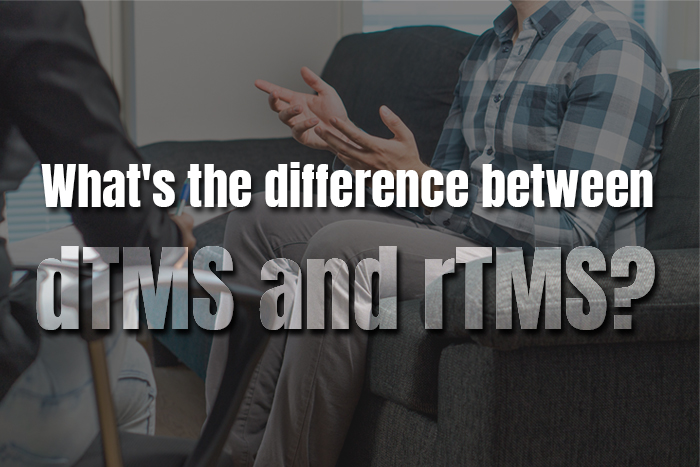What do you think of this article?
By Dr. David Woo - November 16, 2018

Transcranial magnetic stimulation (TMS) is a relatively novel and highly effective treatment for depression, FDA approved since 2008. During a TMS treatment, the healthcare provider places a metal coil over a specific point on the patient’s head to send magnetic pulses to the brain. These pulses activate neurons in the deep brain, which has an important role in mood regulation. Through this mechanism, TMS is successful in reducing or eliminating symptoms of depression.
If you’ve been reading up on TMS, you may also have come across dTMS and rTMS therapy for depression. What’s the difference, and what does it mean for the patient?
Different Technologies, Same Treatment
Both dTMS and rTMS are more specific ways of referring to TMS, or transcranial magnetic stimulation therapy. dTMS stands for deep transcranial magnetic stimulation. rTMS stands for repetitive transcranial magnetic stimulation. While dTMS sends magnetic pulses about 4cm into the brain to activate deep brain neurons, rTMS sends magnetic pulses only 1.5cm into the brain to activate neurons that, in turn, communicate with neurons in the deep brain. Both dTMS and rTMS administer repeated magnetic pulses during treatment. While the magnetic coils and technologies used are slightly different, both are highly effective in treating major depression (1).
What are the Most Common dTMS and rTMS Treatment Side Effects?
When you’re considering a treatment, learning about the side effects should be an important part of your decision. dTMS and rTMS treatment side effects are usually minor and only short-term. Most commonly, patients have reported headache, discomfort in the area of the head where the magnetic coil is applied, facial twitches or tingling, and lightheadedness. However, these tend to subside over the duration of treatment.
How Many Treatments Are Needed?
dTMS vs rTMS treatments also work the same way: You have five treatments per week for six weeks, followed by a three-week taper period. Each dTMS or rTMS treatment lasts just under 20 minutes. Usually, it’s just a matter of what technology your clinic has installed. At Madison Avenue TMS & Psychiatry, we use the Neurostar® rTMS system for TMS therapy. Learn more about becoming a TMS patient at our clinic.
dTMS or rTMS Treatment Cost: Is it Covered by Insurance?
While many insurance providers do not include TMS treatment in their plans up front, they pay for dTMS and rTMS treatment through prior authorizations and single-case agreements. Our staff submit all the necessary paperwork on your behalf so that you can get the treatment you need. You can learn more about TMS therapy costs here.
References
- Wirecki T, Stephenson M, Rebecca Seale, et al. A comparison of rTMS and dTMS treatment outcomes for major depressive disorder in a real-world clinical practice setting. Brain Stim J. Sept-Oct 2015;8(5):e6.
Dr. David Woo is the owner and head clinical psychiatrist at Madison Avenue TMS and Therapy in New York City. Dr. Woo has been seeing patients in private practice since 2002, always with the goals of combining evidence-based medicine with psychodynamic psychotherapy and collaborating with other mental health professionals to ensure the best possible outcomes for his patients. He has been certified to administer TMS at his practice since 2017. His greatest clinical interests include helping patients suffering from depression, anxiety, and obsessive compulsive disorder.
Follow Dr. Woo On









